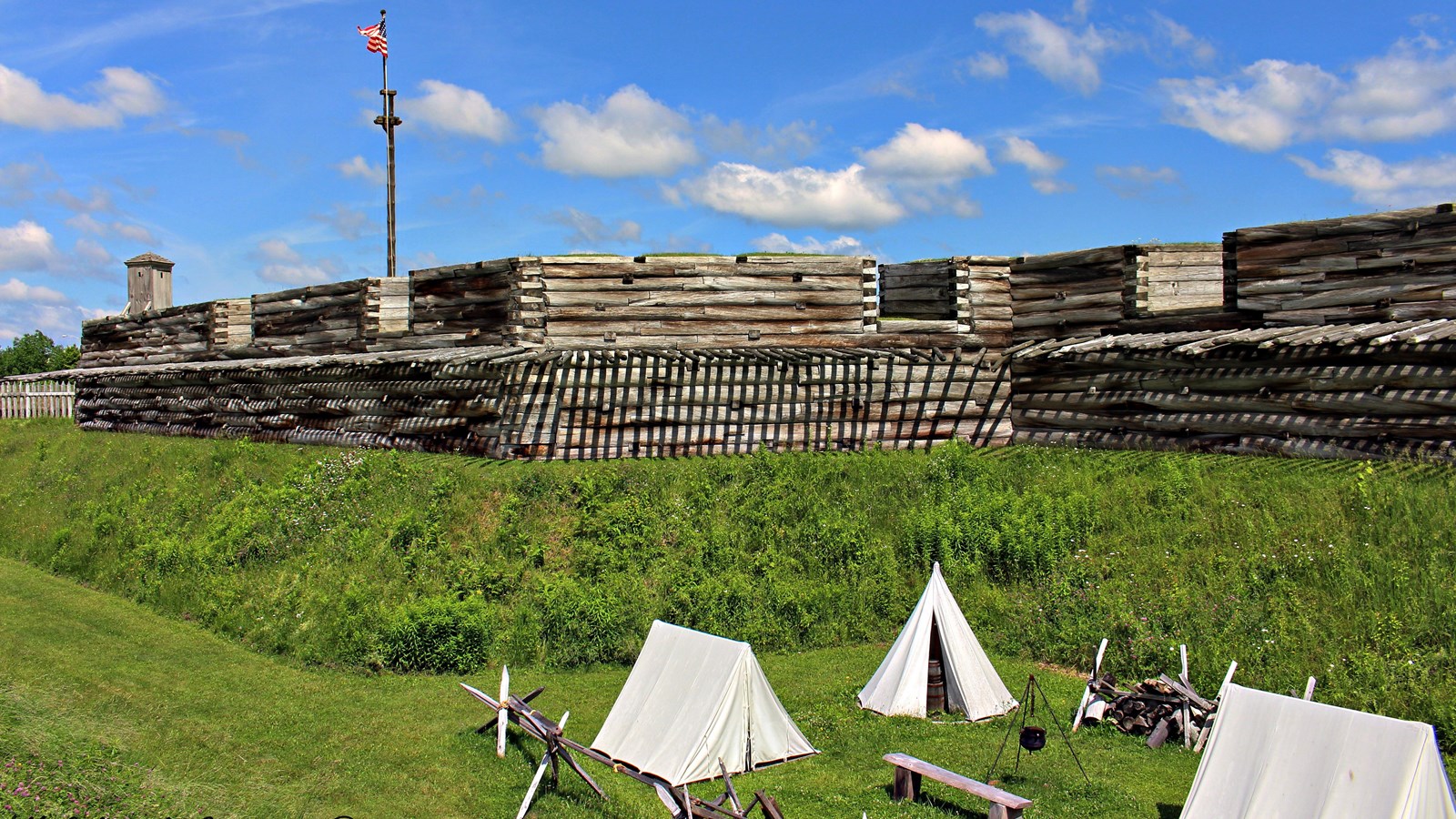Last updated: May 4, 2022
Place
The Ditch

National Park Service/M. Colangelo
The Ditch
A typical feature of forts, the ditch at Fort Stanwix surrounds 3/4 of the fort. It never held water, because the water would damage the fort's wood and earth structure. It still proved an effective obstacle and served to increase the height of the walls. During the siege, the ditch was used primarily as a safe area for livestock. Typically, the ditch served as a living space for a majority of families that followed soldiers to the fort. Period documents and artifacts suggest that the families and soldiers lived there in tents and wooden huts.
From the Orderly Book of the 1st NY Regiment:
Fort Schuyler 3rd September 1779
G:O Officer of the Day to morrow Captain Finck for guard Lt VallcenBurgh = no Cowes to be kept in the Ditch for the Futer the Centries in the gates Will not Suffer any to come in from the Date of this Order
By Order of Col V Dyck
The Gardens
Before his arrival to the fort in the spring of 1777, Gansevoort sent a letter to his second in command, Lieutenant Col. Marinus Willett, ordering a garden to be planted near the fort. Orders within state that:
“As soon as the Season will permit you will have the Garden put in Seed, that the Garrison may not be without vegetables in their Season.”
The vegetables within provided the lifeline needed to survive on the New York frontier so far away from the main Continental Army Supply lines. Root vegetables such as potatoes and onions were grown in them. As well as cabbage, a standard crop useful in preventing the onset of scurvy (vitamin C deficeny) in th 18th Century. The orginal gardens would've be planted just beyond the fort pickets, downstream from the garrison's main nessecary house; taking full advantage of the free fertilizer!
